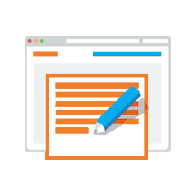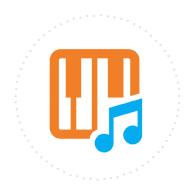Musika Quick Stats
24 Years
Since We Started
41,456+
Happy Customers
10,769
Cities with Students
3,123
Teachers in Network
Lesson Special - Up to 20% OFF! Get Started Now with a Risk-Free Trial!
Here are just a few of the many teachers offering Guitar lessons in Los Angeles . Whether you are looking for beginner guitar lessons for your kids, or are an adult wanting to improve your skills, the instructors in our network are ready to help you now!
Instruments: Guitar Bass Guitar
I have been teaching students since 1999 privately as well as with small groups of people. I'm very passionate about transmitting my experiences to every single student and encouraging them to achieve their goals with the best attitude. I’ve recorded, toured, and played with: Edisun – (FOF-EMI), Dive (Phase One – Red Sony), Ana Free (Warner Singapore), 202 (Pop Art – Sony/BMG), Panza (Ultrapop), and many others. I’m currently on tour with Diego Garcia (Elefant) about to promote his upcoming album “Paradise” playing all over the US, Canada, Mexico, South America & Europe. Read More
Instruments: Piano Guitar Voice Bass Guitar Ukulele Recorder Double Bass Keyboard Electric Guitar Acoustic Guitar
I believe in tailoring my approach to suit their individual needs, helping them overcome obstacles and fostering their strengths. This personalized interaction allows me to create a supportive and encouraging learning environment where students can thrive. The role of a music teacher extends beyond just imparting technical skills. It's about nurturing creativity, instilling discipline, and fostering a lifelong appreciation for music. Teaching provides me with a platform to not only share my expertise but also to be a mentor, guiding students on their musical path and encouraging them to explore their own artistic expression. Read More
Instruments: Guitar Drums Bass Guitar Electric Guitar Acoustic Guitar
I am a lifelong musician, producer and passionate educator. Hailing from Cleveland, Ohio, my musical background is rich and diverse and spans many genres. Though my strong suits lie in jazz and gospel, i am well versed in an array of contemporary musical styles (rock, metal, RB, reggae etc.) . His broad musical experience allows him to appeal to students with an interest in exploring various musical styles. Throughout my musical career I have played with notable acts such as Dominick Farinacci, Elijah Gilmore and Gerald LaVert. Read More
Instruments: Guitar
Im Amir H, a classical guitarist and music educator with over two decades of teaching and performance experience. I hold a Doctorate in Music from the University of Montreal, a Master of Music in Performance from the Royal Northern College of Music in the UK, and an Advanced Certificate in Music from the University of Toronto. My academic training has given me a strong foundation in classical guitar technique, music theory, and music history, which I bring into every lesson. Read More
Instruments: Piano Guitar Bass Guitar Ukulele Keyboard Electric Guitar Acoustic Guitar
My teaching experience started while I was in college working on my Bachelor of Music degree. I gave private lessons to fellow students at my college and also was a substitute teacher for the music school in my hometown. From working with multiple guitar teachers over the course of 10 years, I have picked up on what did and did help me when I was learning. From that, I am able to adapt my methods for the individual student. Read More
Instruments: Guitar Music Electric Guitar Acoustic Guitar
Nothing is better than seeing consistent progression of my students, while seeing their passion for music develop simultaneously. Every student has a different path and journey to learning their instrument, and it is my job to help guide them down that new path, something that is greatly rewarding for both parties. Instilling confidence into students is something I absolutely always strive to do day in and day out, as providing a positive, supportive, and patient environment is something that greatly benefits students. Read More
Instruments: Guitar Electric Guitar Acoustic Guitar
How do I know if my child is ready to start lessons?
Physical readiness: Your child has the fine motor skills and hand-eye coordination necessary to hold and play the guitar without undue difficulty.
Interest: Does your child express an interest in playing the guitar or listening to music? In my experience, the students who are the most excited about learning and being able to play, are the ones who not only progress the fastest, but who are the most likely to stick to guitar and not give up.
Attention span: Can your child focus for at least 15-20 minutes at a time? The interest factor mentioned above can also come into play here, as the more interested a child is in learning guitar, the more likely they are to be able to focus on lessons without getting distracted or bored. It's important to make sure they have the attention span to handle focusing on lessons for at least 15 minute intervals of quality focus time.
Ability / time to practice: Will your child have the time available to practice regularly? Consistent practice is key to progress on the guitar.
What does a normal practice session look like for you?
Warm-up: I start with some basic exercises to loosen up my hands and get the fingers moving.
Scales and chords: Practice playing scales and chords to build finger strength and improve technique.
Songs or pieces: Work on a song or piece of music I'd like to learn, focusing on accuracy and playing at a slow tempo.
Speed building: Gradually increase the tempo as I feel more comfortable with the song or piece.
Improvisation: Spend some time improvising, either by playing along with backing tracks or coming up with my own ideas.
Review: End the session by reviewing what I've practiced, and noting any areas I'd like to work on in future sessions.
When will I start to see results?
Progress depends on several factors, such as frequency and duration of practice, natural ability, and previous musical experience. On average, most guitar students start to see material results within the first couple of months of consistent practice, but as mentioned, this will depend mostly on what a given student puts into the endeavor, in terms of time, effort, and patience.
For beginners, seeing results may mean being able to play simple chords and songs, while for more advanced students, it may mean improvement in specific skills such as dexterity, speed, or musical expression.
It's important to remember that learning to play guitar is more of a marathon than a sprint, and that progress will come with time and dedication.
What advice do you have about practicing effectively?
Practice slowly, patiently, deliberately. Slowing down when practicing allows a guitar player to focus on the finer details of playing the instrument, such as finger placement, hand posture, and strumming technique. It enables them to play the correct techniques accurately, rather than playing fast and making mistakes. Playing slowly helps to build more skilled, precise muscle memory, so when the player speeds up, the correct techniques become second nature, and one's playing sounds much more accurate and rich.
24 Years
Since We Started
41,456+
Happy Customers
10,769
Cities with Students
3,123
Teachers in Network
Trusted as the industry leader, for over 21 years the teachers in our network have been providing Guitar lessons in Los Angeles to students of all ages and abilities.
We'll then reach out to the teachers for you.
Schedule the risk-free trial lesson directly with the teacher.
Continue with that teacher or try someone else.







